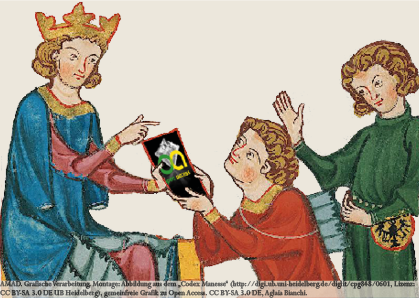AMAD
"Archivum Medii Aevi Digitale - Specialized open access repository for research in the middle ages"To submission

Full metadata record
| DC Field | Value | Language |
|---|---|---|
| Contributor | The Pennsylvania State University CiteSeerX Archives | - |
| Author | Joseph Falaky Nagy | - |
| Other Identifier | http://journal.oraltradition.org/files/articles/1ii/4_nagy.pdf | - |
| Other Identifier | http://citeseerx.ist.psu.edu/viewdoc/summary?doi=10.1.1.548.5390 | - |
| URI | https://www.amad.org/jspui/handle/123456789/73364 | - |
| Description | Celtic scholars do not doubt that there was an active oral narrative tradition functioning in pre-Christian and medieval Christian Irish society. Until recently, tradition-bearers with amazingly large story-repertoires could be found among Gaelic-speaking peasants and fi shermen in Ireland and Scotland. These creative oral artists, often neglected and no longer listened to in their own time, bore vivid testimony to a long-lived and rich Gaelic tradition of stories and narrative techniques—a tradition that is often referred to in the extant corpus of medieval Irish literature, from its earliest stages (the sixth to ninth centuries A.D.) to the beginnings of the modern literary era (the seventeenth and eighteenth centuries). Although the documented contemporary sgéalí, “storyteller ” (scélaige in earlier Irish spelling), is an amateur—that is, he is not paid for his performance, nor does he live by his storytelling craft—the medieval narrator usually was a professional, and in fact was often a member of the exalted sodality of professional poets known as the fi lid (singular fi li, from a root meaning “to see”), who together with musicians and other possessors of special technical knowledge constituted the wider class of the áes dána, “people of art[s], ” or (áes cerda, “people of craft[s]. ” While the fi li’s main activity was the composition of verse celebrating his patrons and detailing the genealogy and lore of families and tribes, we are told in a medieval Irish tract on the training of fi lid that the oral transmission and performance of traditional prose tales—scéla, sing. scél, from a root meaning “to say ” (Greene 1954:26)—was an essential aspect of fi lidecht, “the poetic profession”:1 ORALITY IN MEDIEVAL IRISH NARRATIVE 273 In hí dā foglaim na hochtmaide bliadna.i. fi scomarca fi led.i. duili berla 7 clethchor choem | - |
| Format | application/pdf | - |
| Language | eng | - |
| Rights | Metadata may be used without restrictions as long as the oai identifier remains attached to it. | - |
| Keywords | 7 | - |
| Dewey Decimal Classification | 940 | - |
| Title | Oral Tradition 1/2 (1986): 272-301 Orality in Medieval Irish Narrative: An | - |
| Type | text | - |
| AMAD ID | 568295 | - |
| Open Access | 1 | - |
| Appears in Collections: | BASE (Bielefeld Academic Search Engine) General history of Europe | |
Files in This Item:
There are no files associated with this item.
Items in DSpace are protected by copyright, with all rights reserved, unless otherwise indicated.

